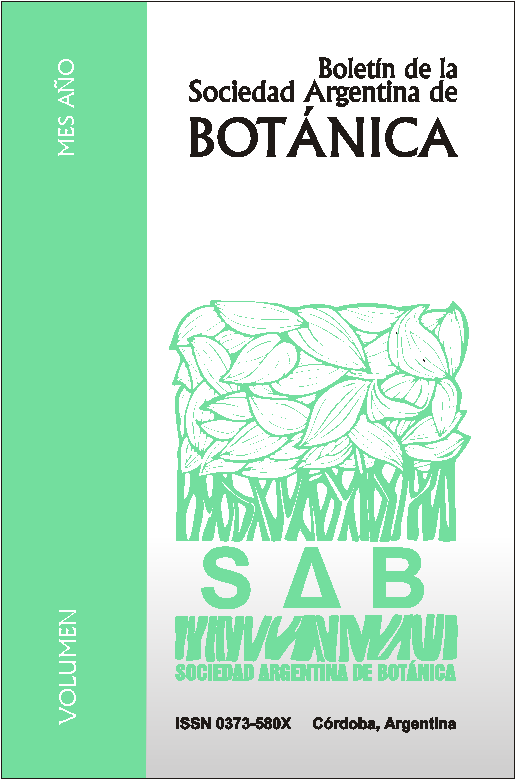Chasmophytic vegetation and mesoclimates of rock outcrops in Ventania (Buenos Aires, Argentina)
DOI:
https://doi.org/10.31055/1851.2372.v50.n1.11018Keywords:
landscape arrangement of species, mountain mesoclimates, plant communities, Sierras Australes, species lineage.Abstract
We studied the relationships between mesoclimate variations of rock outcrops and the composition of the chasmophytic communities over a W-E altitudinal gradient (500-1243 m a.s.l.) in the Sierras Australes (Ventania). In transitory weather stations located on 5 sites we recorded climatic variables hourly and simultaneously during 3-4 days at each season for 2 years. We used phytosociological data obtained with the relevé method by Frangi y Bottino (1995) in sites with same topography that weather stations. The analysis showed the influence of aspect on mesoclimates, since physical properties of rocks enhance thermal contrast originated in direct sun radiation, then, it showed altitudinal gradients. Sites to S (550 m a.s.l.) and SW (850 m a.s.l.) was shadowy, humid with low evaporation, and have a common species assemblage; at higher altitude lower temperatures favour microthermic species: endemic, Subantarctic or Andean. North-facing lower site was the hottest and driest biotope; includes endemisms, xerothermophilous southern-Brazilian, and northwestern Argentina species connected through the Andean-pampean mountainous arch. Northeast-facing mid-elevation outcrops were floristically and mesoclimatically transitional between both lower sites, lacking xerothermophilous and Subantarctic species. Summit outcrops, evaporative, sunny and relatively cold, had lower richness. These mountains enclose mesoclimates, species and communities exclusive to the Pampas, whose arrangement in the landscape are coherent with their lineage.Downloads
Published
Issue
Section
License
Provides immediate and free OPEN ACCESS to its content under the principle of making research freely available to the public, which fosters a greater exchange of global knowledge, allowing authors to maintain their copyright without restrictions.
Material published in Bol. Soc. Argent. Bot. is distributed under a Creative Commons Attribution-NonCommercial-ShareAlike 4.0 International license.





